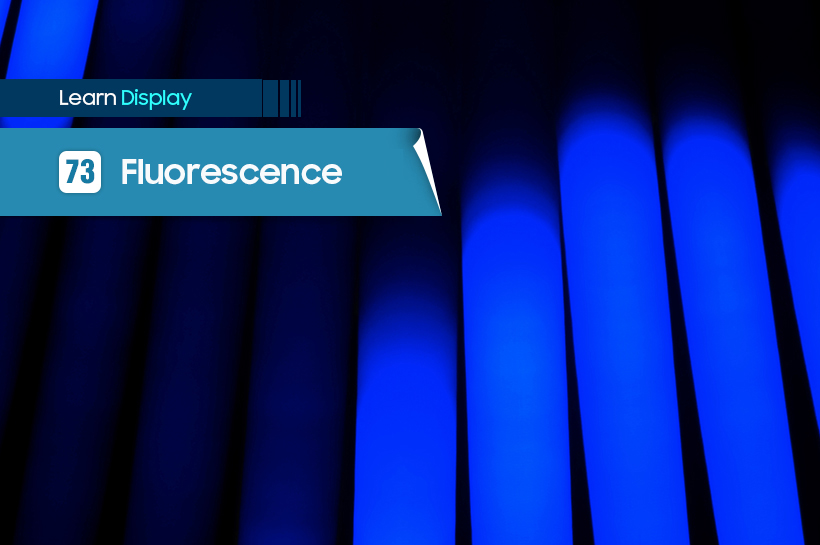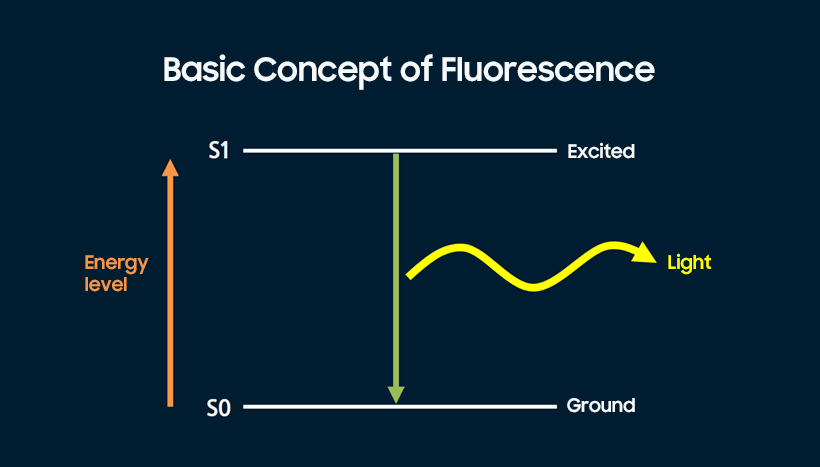
Fluorescence is a form of luminescence used in OLED displays. Luminescence is a phenomenon where light is given off when the energy level of the electrons in a light-emitting material drops from a high level (an excited state) to a low level (a ground state) as the reduced amount of energy is released in the form of light.

As illustrated above, when an electron moves inward from an outer orbit to an inner one, electron energy loss takes place, stabilizing the material; any excess energy is released in the form of light. On the contrary, when an electron absorbs external energy and becomes excited, it moves outward.

An OLED display uses fluorescence, one of the different types of luminescence. Energy is injected into the light-emitting material to induce fluorescence where the electrons are in a ground state to turn them into an excited state so that, when the energy level of the electrons is reduced to the stable ‘ground state’ in a brief moment, energy is emitted in the form of light for displays. As suggested in the illustration above, light is emitted in the wavelength that corresponds to the amount of energy reduced from S1 to S0.
Even though fluorescence was the first OLED luminescence technique to be developed, it faces low internal quantum efficiency (25%) as a serious limitation. To overcome this, active research and development in ‘phosphorescence’ or ‘thermally activated delayed fluorescence (TADF)’ has been in place lately.



